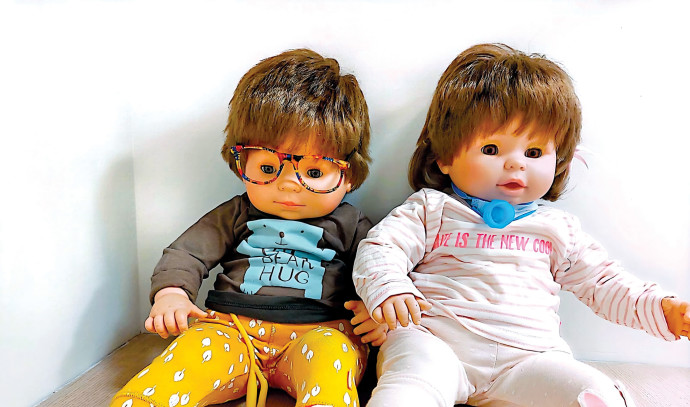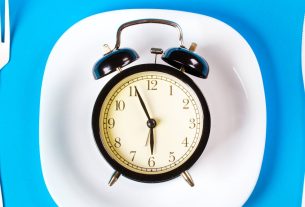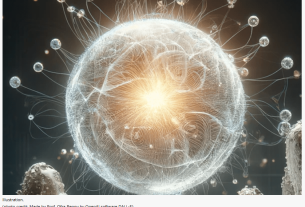[ad_1]
“Children want dolls they can relate to, dolls that look like them,” says Tami Gutman, a special education teacher at ADI Jerusalem. ADI is an acronym for “ability, diversity, inclusion.”
“For children with severe disabilities and complex medical conditions, dolls that mirror their life situations are not available in neighborhood toy stores, so I decided to do something about it.”
ADI Jerusalem is a rehabilitative care facility for some 220 children and young adults with severe disabilities. This includes 90 residents aged three to 21 with intellectual and motor disabilities and complex medical needs, as well as around 130 day students who attend ADI Jerusalem’s educational and vocational programs.
Gutman, head of ADI’s library of adaptive books, toys, and games, bought a few soft dolls and adapted each one into a playtime twin that precisely mirrored a particular child.
Although major manufacturers such as Mattel have begun designing playthings that represent children with wheelchairs, limb differences, birthmarks, scars, albinism, and medical equipment, Gutman’s Toy Like Me project is personalized.
“We’ll go to any length to try to individualize every program and reach every student, so we have taken dolls and added gastro lines, glasses, and hearing aids,” says Rachel Fishheimer, director of education at ADI Jerusalem.
“We also have dolls that are respiratory dependent, and dolls with a tracheostomy cannula in their necks. Any doll could be adapted for any child,” she says.
“But it’s much more than a doll,” Fishheimer emphasizes.
“It’s a philosophy to make every child feel special, no matter what his or her needs or limitations, to make the child feel like any other child.”
Fishheimer speaks of a particular child “who can only eat through a gastro tube. All his friends are eating in the typical way. To make him feel accepted, we have a doll that eats with a spoon through its mouth and another through a gastro tube in the stomach, to show that both are acceptable,” she says.
The same goes for children hooked up to oxygen or a respirator or with limited mobility. By providing them with a standard doll alongside a doll customized with adaptive or medical apparatus, ADI kids get the message that there are other children like them and model the ideal of typically-abled and differently-abled kids playing together.
“A child who eats only through a gastro tube still wants to play like a neurotypical child. We’re modifying play so that it’s relevant to their world,” says Fishheimer, who oversees a staff of educators, classroom aides, and paraprofessionals.
The mother of Refael, 10, says, “ADI has been providing Refael with innovative tools, resources, and devices that are specialized just for him for years, but I was still awestruck by these incredible dolls. In fact, I wish I had one just like it to keep at home.”
She explains that when Refael is at home with his family in the evenings, he sits at the dinner table with them. However, “he isn’t eating in the same way we are, and I can see that it makes him feel awkward and different. It is unbelievable that he can eat his morning meals at ADI while simultaneously ‘feeding’ a doll that eats the same way he does. It makes him feel so happy and empowered. We are so grateful to ADI for giving Refael yet another tool for growth that makes him feel valued and equal.”
Gutman says the adapted dolls have been “happily received by the children, who know from experience that they must handle the dolls gently and be careful not to disconnect the tubing. I’ve seen with my own eyes how dolls like these help children make sense of their world and experiences and can make all the difference in their growth and development.”
In ADI’s Sensory Library, Gutman has accessorized books with sensory components to make stories more engaging for children with cognitive disabilities. She and the staff, she says, are always on the lookout for ways to turn playtime items into therapeutic and educational tools.
“We also use these items to prepare children before medical procedures and for other activities or needs they have, for example going for a haircut,” says Fishheimer.
“A haircut can be scary for a child who may have limited understanding and is nonverbal and cannot express his feelings, So we have kits that contain a story of a child going for a haircut, and scissors he can handle, with guidance, to show him that cutting hair doesn’t hurt. We have kits to prepare our children for all kinds of things, including blood tests, which unfortunately they do a lot of. It’s all part of our philosophy.”
ADI cares for a complex population.
“Some are mobile but have severe medical complications. Others might have severe intellectual and physical disabilities, or all three,” says Fishheimer. “In addition, many are visually and/or hearing impaired.”
So far, there are only a few adapted dolls. Fishheimer says that she and Gutman are thinking about how to expand the inventory and maybe, in the future, turn this project into something larger.
For now, she says, “We strive to give our children the best of everything. And if it doesn’t exist, we create it.” ❖
Play is essential to development
“Play is the child’s ‘work.’ This is what children need to practice – skills that enable them to develop, understand the world, and make sense of their future,” says Dr. Maurit Beeri, director general of the 120-bed ALYN Hospital Pediatric & Adolescent Rehabilitation Center in Jerusalem. More than 300 children, mostly outpatients, go there every day for treatment related to injury, illness, or congenital conditions.
“If kids don’t have toys they can play with because of physical or mental limitations, that harms their development,” Beeri says.
Customized playthings are among the products innovated at ALYN’s PELE Center, directed by occupational therapist Hilla Boral.
Some of these include a soap bubble blower for children who otherwise can’t blow bubbles; a foldable device for bowling; adaptive floor puzzles; a rotating marker holder for children with one functional hand; and a ball-pushing mechanism. “At each age and stage, children need toys that will be interesting, that will make sense to them and foster a sense of achievement and success,” says Beeri.
“If a child with mobility issues wants to play ball, you need to put the ball at the end of a rubber string so the child can retrieve it.”
ALYN also adapts dolls for children with medical accessories. One such doll can be activated with a switch to walk with a walker. Beeri says this is a practice device that helps children see how to do it themselves. The doll can also be enjoyed without the walker. “From the start, we make toys adaptable so that one child can play with the adaptability aspect, and others can use it without those ‘training wheels,’” she says.
“Kids with disabilities don’t want to have toys that don’t connect them to other children. This is where we come to the idea of inclusive design.”
As kids get older, she adds, they need to feel part of a social circle.
“They want to do exactly what the other children do. You need to adapt existing toys or connect them to universal systems they can use. For example, we worked with big companies, such as Microsoft, to develop adapted controllers for virtual reality games because children without finger dexterity can’t use intricate consoles. Now we have a system that breaks down all those controls to separate switches they can press with their foot or chin or other parts of the body. The child can then play on the same level as others; it makes children equal in cyberspace.”
ALYN has also adapted musical instruments so that children with limited dexterity can play guitar, drums, and harp together with typically developing children.
[ad_2]
Source link



